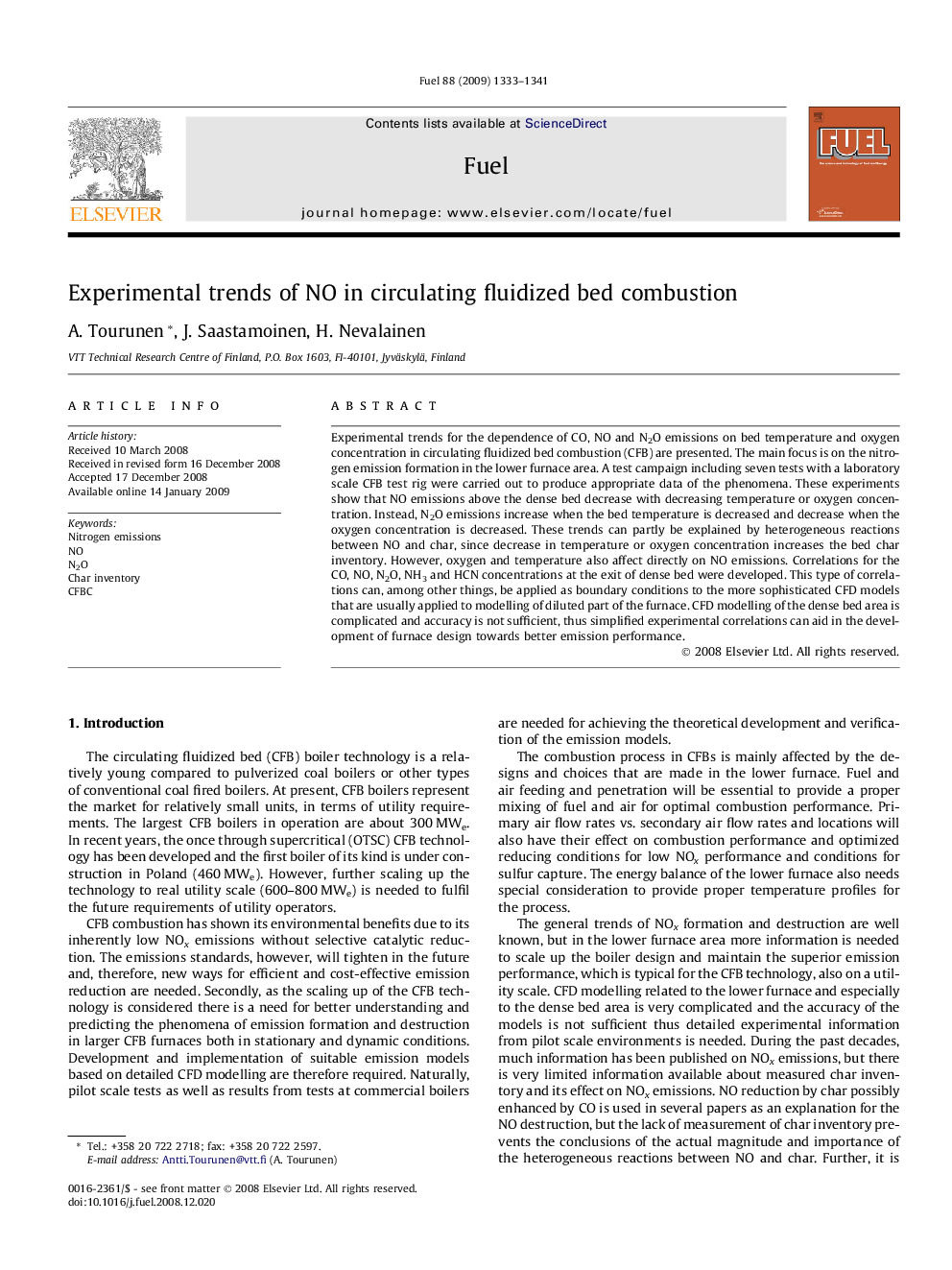| Article ID | Journal | Published Year | Pages | File Type |
|---|---|---|---|---|
| 207229 | Fuel | 2009 | 9 Pages |
Experimental trends for the dependence of CO, NO and N2O emissions on bed temperature and oxygen concentration in circulating fluidized bed combustion (CFB) are presented. The main focus is on the nitrogen emission formation in the lower furnace area. A test campaign including seven tests with a laboratory scale CFB test rig were carried out to produce appropriate data of the phenomena. These experiments show that NO emissions above the dense bed decrease with decreasing temperature or oxygen concentration. Instead, N2O emissions increase when the bed temperature is decreased and decrease when the oxygen concentration is decreased. These trends can partly be explained by heterogeneous reactions between NO and char, since decrease in temperature or oxygen concentration increases the bed char inventory. However, oxygen and temperature also affect directly on NO emissions. Correlations for the CO, NO, N2O, NH3 and HCN concentrations at the exit of dense bed were developed. This type of correlations can, among other things, be applied as boundary conditions to the more sophisticated CFD models that are usually applied to modelling of diluted part of the furnace. CFD modelling of the dense bed area is complicated and accuracy is not sufficient, thus simplified experimental correlations can aid in the development of furnace design towards better emission performance.
